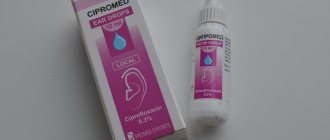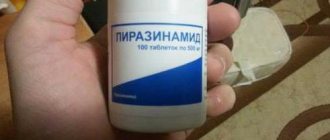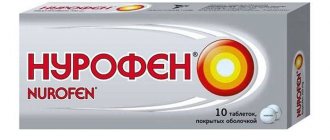Description of the drug Aquadetrim
Externally, the drug is a clear liquid that has an anise smell.
The drug has two main areas of application:
- Lack of vitamin D in the human body
- Normalization and regulation of calcium and phosphorus metabolism.
Vitamin D is essential for the human body.
It stimulates the absorption of calcium into the intestines and blood, and is also responsible for the incorporation of calcium into the osseous skeleton. Thus, it is thanks to this vitamin that the human skeleton can grow, develop and become stronger.
Compound
Let's take a closer look at the composition of the drug:
- Colecalciferol. It is the main active component of the drug. Its main task is to regulate calcium-phosphorus metabolism. Its main functions are improving the absorption of calcium into the intestines, as well as improving the absorption of phosphorus into the renal tubules.
- Sucrose. It is an excipient. It adds flavor to the drug, making it sweeter.
- Benzyl alcohol. It is a disinfectant for medicines.
- Sodium hydrogen phosphate. Allows the substance to spread faster throughout the body.
- Anise flavor. Gives the drug a special smell.
Contraindications
The use of Aquadetrim is contraindicated against the background of:
- Hypervitaminosis D;
- Hypercalcemia;
- Hypercalciuria;
- Urolithiasis (with the formation of calcium oxalate stones in the kidneys);
- Sarcoidosis;
- Kidney diseases (acute and chronic);
- Kidney/liver failure;
- Active form of pulmonary tuberculosis;
- Hypersensitivity to vitamin D3 and excipients of the drops (especially benzyl alcohol).
The medicine is not prescribed to children under one month of age.
In accordance with the instructions, Aquadetrim should be taken with caution:
- Patients in a state of immobilization;
- Simultaneously with thiazides, cardiac glycosides;
- Pregnant and lactating women;
- Infants with a predisposition to early overgrowth of fontanelles (with a small size of the anterior crown).
pharmachologic effect
Based on the composition, it can be understood that the main task of the drug is to normalize calcium metabolism in the body and its entry into bone tissue.
Let's look at all the pharmacological functions of the drug:
- Normalization of calcium and phosphorus metabolism in the body. This contributes to the proper formation and strengthening of the human bone skeleton, as well as the preservation of the structure of bone tissue.
- Helps ensure high-quality capture of calcium and phosphates by bone tissue. After this, it helps distribute the ions in the tissues and blood.
- The distribution of ions in tissues maintains the tone of skeletal muscles and also regulates some functions in the heart.
- Ensures the full functioning of the parathyroid glands.
- Can prevent diseases such as osteoporosis and rickets. We can say that the drug is able to regulate hormonal changes.
The drug is absorbed in the small intestine, and then enters the kidneys and liver.
The half-life of the drug from the body occurs after 2–4 days, mainly through the kidneys. In cases of impaired renal function, the half-life can almost double (4 – 8 days)
Pharmacodynamics
Vitamin D3 is an active antirachitic factor. The most important task of this vitamin is to regulate the metabolism of phosphate and calcium, which promotes proper skeletal growth and mineralization.
Vitamin D3 is a natural form of vitamin D that is formed in human skin under the influence of sun rays. Unlike vitamin D2, it is characterized by 30% higher activity. This element plays a significant role in the absorption of phosphates and calcium from the intestines, in the process of bone calcification and in the transport of mineral salts, and also regulates the excretion of phosphates and calcium by the kidneys.
The content of calcium ions in the blood determines the function of the myocardium, maintaining the tone of the skeletal muscles, muscles, regulates the process of blood clotting, and helps the conduction of nerve impulses. Vitamin D is required for the normal functioning of the parathyroid glands and at the same time participates in the functioning of the immune system, affecting the synthesis of lymphokines.
Lack of vitamin D in the daily diet, impaired absorption from the digestive tract, lack of calcium, as well as insufficient exposure to sunlight during the active development of the child during the day can lead to rickets; for adults, this can lead to osteomalacia, and in pregnant women, calcification processes may be impaired fetal bone tissue, as well as symptoms of tetany. The greatest need for vitamin D occurs in women during menopause, as they often develop osteoporosis due to hormonal imbalances.
Indications for use
Let's look at a number of cases when a person needs to take Aquadetrim:
- Vitamin D deficiency. Lack of vitamin D in the human body. Most often, this happens due to a lack of vitamins in food. I would like to say right away that vitamin D is found in large quantities in fish, dairy products, eggs, and also in the liver of animals. Regular consumption of these products can prevent vitamin deficiency.
- Treatment and prevention of rickets . Young children are most susceptible to such diseases during periods of rapid growth.
- Metabolic osteopathies. These are skeletal diseases, the common feature of which is a violation of bone tissue metabolism.
- Acceleration of bone fusion. Often the drug is prescribed after fractures or cracks to speed up the healing process. Many people are probably familiar with the advice of traumatologists to consume more calcium. The use of Aquadetrim can replace foods rich in calcium.
- Spasmophilia. A disease that manifests itself in children with spasms and convulsions throughout the body.
- Loss of calcium in bones and teeth. You can learn about this from analyzes and also see for yourself. Teeth begin to lose color, begin to crumble and hurt more often.
How to take before or after meals?
For each person, it is important how his mental and physical maturation occurred in infancy. It is during this period that the foundation is laid that will influence a person’s health throughout his life. The current generation of children cannot boast of excellent health, and the situation is not improving every year. But medicine does not stand still, and new drugs are constantly appearing, which, if taken correctly, stimulate the proper maturation of the baby. “Aquadetrim” is designed to catalyze all processes of a baby’s development. It has a positive effect on the formation of the baby’s nervous and cardiovascular system. measures aimed at treatment and prevention.
But in general, vitamins are taken either during or after meals.
The content of vitamin D3 in the preparation, especially in an aqueous solution, allows for preventive measures. Indeed, the instructions for use of Aquadetrim do not contain information on how exactly to take it - before or after meals. The drug Aquadetrim is usually prescribed to pregnant women, infants and small children, as it is vitamin D necessary for early development.
To understand when to take it correctly before or after meals, you should, of course, carefully study the instructions for this drug. You can look at the section. Vitamin D is of great importance for our body; it takes part in the functioning of many systems and functions, and its deficiency can provoke serious diseases.
Instructions for use and dosage regimen for adults and children
The drug is administered orally. In most cases, the attending physician himself prescribes the drug and its dosage.
If this is not the case, then the reception is carried out as follows:
- Children under three years old: 1 - 2 drops per day.
- Premature babies, starting from the second week of life, 2 - 3 drops per day.
- During pregnancy, 1 drop per day throughout the entire period. Or 2 drops per day, during the last 2 months of pregnancy. This is the dose of vitamin that the female body should receive.
- For adults , for prevention, 1 – 2 drops per day.
Now let's look at the dosage for various diseases:
- For rickets, from 4 to 10 drops per day, depending on the degree and stage of the disease.
- For rickets-like diseases, 4–6 drops per day (possibly more as prescribed by a doctor).
- Osteoporosis. For complex treatment of the disease, it is recommended to use 1 to 3 drops per day.
Reviews
| Leave feedback | |
| 1 2 3 4 5 | |
| Send Cancel | |
Send your review
Aquadetrim, Vitamin D3, aqueous solution, 15000IU/ml (10ml)
Average rating: Number of reviews: 0
Reviews about the drug Aquadetrim are contradictory. Among the positive aspects of the drug, they talk about its effectiveness as a preventive and therapeutic agent, low cost and ease of use (the pleasant taste and smell of the product make it easy to give the drug to a small child).
Many users write about unpleasant side effects (frequent constipation, nervous excitability of the child, allergic reactions in infants). It is worth noting that many problems with the use of Aquadetrim are associated with its uncontrolled prescription by doctors without prior diagnosis.
Share with us your feedback on using Aqua D3 here and in the comments!
Side effects
There are very few side effects of this drug and they occur extremely rarely. This can only happen in cases of intolerance to any component.
Let's look at the list of side effects:
- Headache, sometimes dizziness.
- Nausea, sometimes vomiting.
- Abnormal stool, weight loss.
- Increased blood pressure and increased heart rate.
- General weakness and malaise.
If side effects occur, you should stop using the drug immediately. This is due to the fact that the medicine is eliminated from the body for a long time, which means it accumulates. The more irritants, the stronger the side effects.
Overdose
Overdose of the drug occurs quite rarely and a one-time increase in dose cannot lead to serious consequences.
If you drink too much at one time, the following consequences are possible:
- Strong headache.
- Nausea and vomiting.
- Weakness and drowsiness.
- Arrhythmia.
- Thirst.
- Frequent urination.
It must be said that regular overdose can lead to serious consequences. Let's say the dose is increased two or more times, and taking such quantities of the drug for several months can cause serious problems with disruption of the functioning of internal organs and even their failure.
To combat such consequences, drugs containing potassium, magnesium, thiamine and ascorbic acid are used.
It is important to understand that increasing the dose will not lead to a positive effect. The body cannot absorb more than normal, which means that everything unnecessary will be deposited in other organs and will definitely not be beneficial.
Interaction with other drugs
The drug Aquadetrim interacts well with almost all medications.
But it is necessary to understand that a number of agents can reduce the effectiveness of Aquadetrim. However, taking the drugs together is allowed.
The only serious “but” is taking Aquadetrim with drugs to lower blood pressure. Also, in the case of constant use of serious medications or vitamins, to maintain body functions, a consultation with your doctor is necessary.
special instructions
- must be avoided.
- You need to understand that the use of the product does not always have to correspond to the daily requirement of vitamin D, especially with long-term treatment. It is important to look at nutrition and the vitamin content of foods.
- For young children, the drug is prescribed exclusively by a doctor. It is also important to consider the baby's nutrition.
- When taking the drug, you should not use large doses of calcium or preparations containing it.
Shelf life of tablets after opening
The instructions and packaging clearly state how to properly store the product:
- The temperature should not exceed +25 degrees.
- It is not for nothing that the drug is placed in a dark glass bottle: it should be protected from direct sunlight and light in general.
- The lid must be tightly closed.
- The product should be kept out of the reach of children.
Some people are wondering if it is possible to store a vitamin preparation in the freezer? This hardly makes sense:
- the liquid will freeze, and then how to take the product?
- freezing and defrosting will affect the composition in the most negative way;
- Why are such drastic measures needed if a compartment in the refrigerator where the temperature is above zero but does not cross the +15 degree mark is sufficient for storage?
Conclusion: the freezer is completely unsuitable for storing this product.
Aquadetrim can be stored under the conditions indicated above for three years if the factory packaging remains intact, but what to do when both the box and the bottle have already been opened? First, you need to lower the storage temperature to +10 - +15 degrees. The optimal solution is to store the drug in the refrigerator, for example, in a compartment on the door. Secondly, comply with all other storage conditions, but keep in mind that the shelf life of the product will still be reduced. It can be used for 4-6 months, which is quite convenient.
The fact is that Aquadetrim is taken in long courses, or more precisely, from approximately October to April. In late spring and sunny summer there is no need to take the drug. Thus, the shelf life of Aquadetrim after opening the package coincides with the duration of the course. Considering the low cost of the product, it is quite possible to purchase a new bottle once a year.
Use during pregnancy and lactation
Taking the drug during pregnancy must be agreed with your doctor. Indeed, very often women feel the need for vitamin D. Despite this, this does not happen to every body.
Taking Aquadetrim during lactation should also be agreed with your doctor. Otherwise, the child may develop a disease such as hypercalcemia.
It should be understood that during pregnancy and during feeding, doses should be minimal and overdose should not be allowed. Otherwise, it may have a bad effect on the baby.











